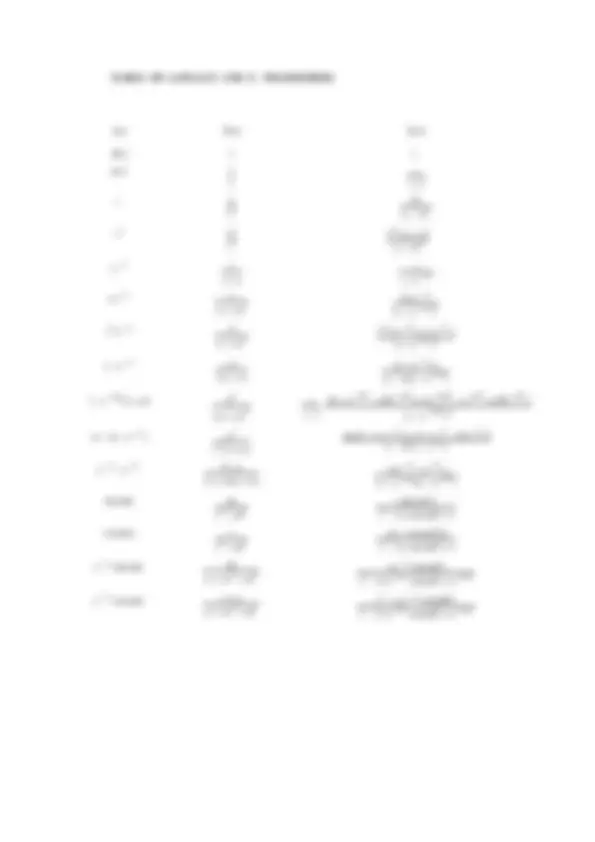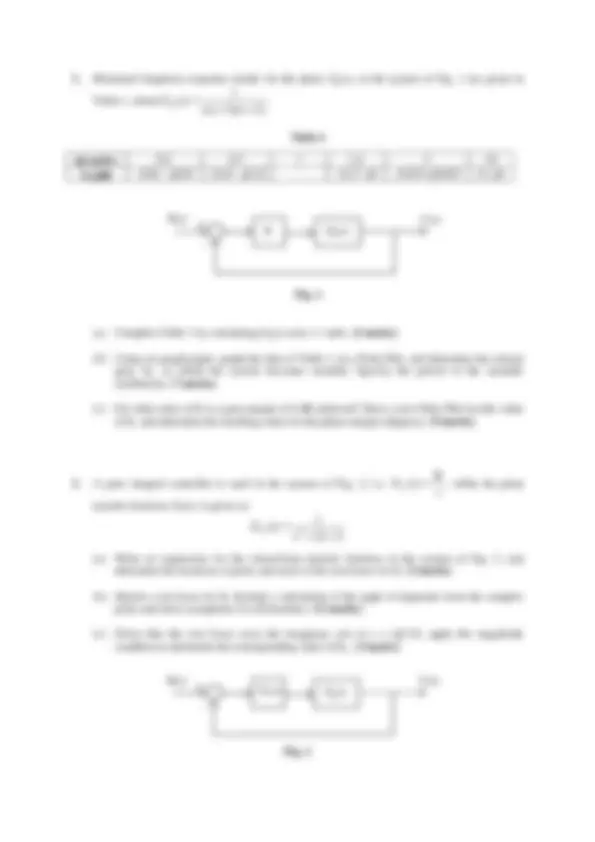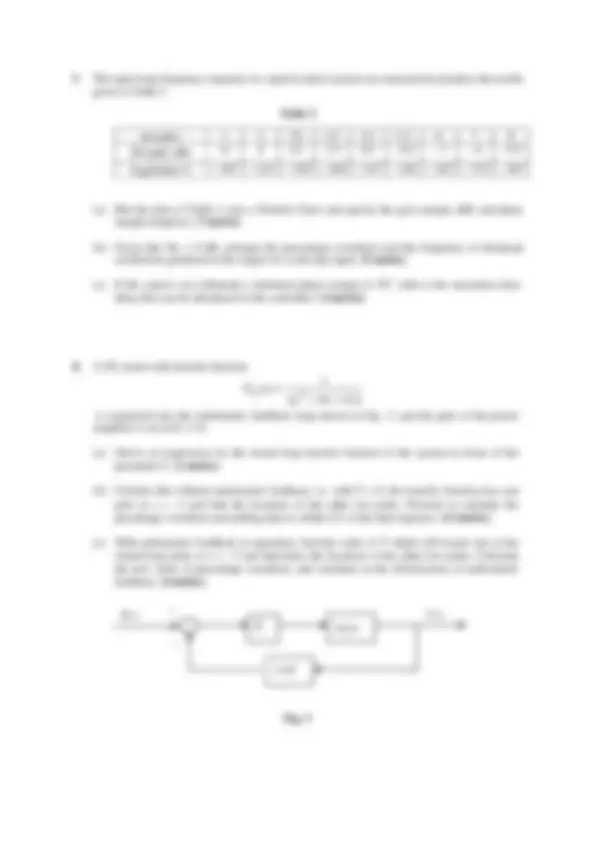





Study with the several resources on Docsity

Earn points by helping other students or get them with a premium plan


Prepare for your exams
Study with the several resources on Docsity

Earn points to download
Earn points by helping other students or get them with a premium plan
Community
Ask the community for help and clear up your study doubts
Discover the best universities in your country according to Docsity users
Free resources
Download our free guides on studying techniques, anxiety management strategies, and thesis advice from Docsity tutors
Main points of this exam paper are: Proportional Plus Integral, Respective Transfer Functions, Locations, Poles, Zeroes, Damping Ratio, Measurements, Open-Loop Conditions, Polar Plot, Gain Margin
Typology: Exams
1 / 7

This page cannot be seen from the preview
Don't miss anything!




The following standard formulas are given and may be freely used :
Mp Mo
2 ζ 1 − ζ (^2) ( ζ ≤ 0. 707)
Tr (0 − 100%) =
Overshoot = 100 exp −
Ts (±2%) ≤
ln
Ts (±5%) ≤
ln
Ziegler-Nichols Rules : Proportional : K = 0.5 Kc P+I control : K = 0.45 Kc , Ti = 0.83 Tc PID : K = 0.6 Kc , Ti = 0.5 Tc , Td = 0.125 Tc
s(s 1 )(s 2 )
1 G (^) p (s)
=.
s
K Gc (s)= , while the plant
s 2 s 5
1 G (^) p (s) 2
=
G( jω ) (dB) 12 8 4.5^ 2.5^ 0.5^ – 0.5^ – 3^ – 6^ – 9.
4. A DC motor with transfer function:
s(s 4s 4.2)
1 G (^) p (s) 2
=
C(s)
R(s)^ +
s
s 3 Gc(s)
= , is found to meet the